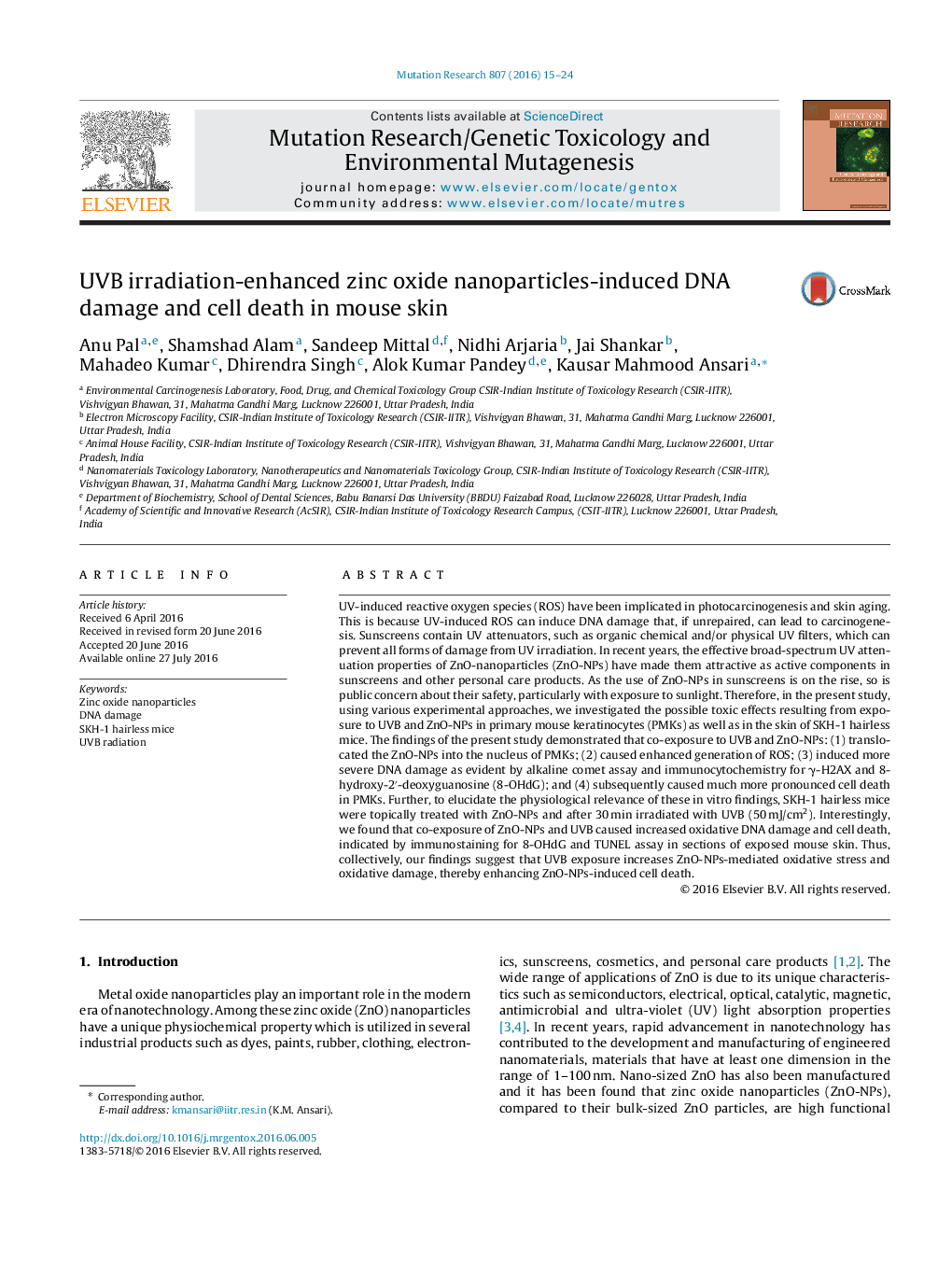| Article ID | Journal | Published Year | Pages | File Type |
|---|---|---|---|---|
| 2147814 | Mutation Research/Genetic Toxicology and Environmental Mutagenesis | 2016 | 10 Pages |
•Co-exposure of UVB and ZnO-NPs translocates ZnO-NPs into the nuclei of PMKs.•Co-exposure of UVB and ZnO-NPs induces greater oxidative DNA damage in PMKs.•Co-exposure of UVB and ZnO-NPs causes much more pronounced cell death in PMKs.•Exposure of SKH-1 mouse skin to UVB and ZnO-NPs enhances DNA damage and cell death.
UV-induced reactive oxygen species (ROS) have been implicated in photocarcinogenesis and skin aging. This is because UV-induced ROS can induce DNA damage that, if unrepaired, can lead to carcinogenesis. Sunscreens contain UV attenuators, such as organic chemical and/or physical UV filters, which can prevent all forms of damage from UV irradiation. In recent years, the effective broad-spectrum UV attenuation properties of ZnO-nanoparticles (ZnO-NPs) have made them attractive as active components in sunscreens and other personal care products. As the use of ZnO-NPs in sunscreens is on the rise, so is public concern about their safety, particularly with exposure to sunlight. Therefore, in the present study, using various experimental approaches, we investigated the possible toxic effects resulting from exposure to UVB and ZnO-NPs in primary mouse keratinocytes (PMKs) as well as in the skin of SKH-1 hairless mice. The findings of the present study demonstrated that co-exposure to UVB and ZnO-NPs: (1) translocated the ZnO-NPs into the nucleus of PMKs; (2) caused enhanced generation of ROS; (3) induced more severe DNA damage as evident by alkaline comet assay and immunocytochemistry for γ-H2AX and 8-hydroxy-2′-deoxyguanosine (8-OHdG); and (4) subsequently caused much more pronounced cell death in PMKs. Further, to elucidate the physiological relevance of these in vitro findings, SKH-1 hairless mice were topically treated with ZnO-NPs and after 30 min irradiated with UVB (50 mJ/cm2). Interestingly, we found that co-exposure of ZnO-NPs and UVB caused increased oxidative DNA damage and cell death, indicated by immunostaining for 8-OHdG and TUNEL assay in sections of exposed mouse skin. Thus, collectively, our findings suggest that UVB exposure increases ZnO-NPs-mediated oxidative stress and oxidative damage, thereby enhancing ZnO-NPs-induced cell death.
